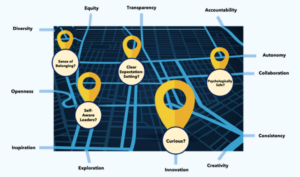
Organizational Health: Understanding Its Influence and Structure
In the modern business world, success isn’t just about profitability. It’s also about sustainability. And at the heart of every sustainable business lies organizational health.

In the modern business world, success isn’t just about profitability. It’s also about sustainability. And at the heart of every sustainable business lies organizational health.

Employee recognition is a must for any organization. But if you’re looking for a one-and-done kind of formula, you’ll probably want to think again. That’s

The modern workplace has changed dramatically — along with the composition of today’s workforce. An increasing number of companies now rely on a mix of

If your organization is aiming to attract and retain a high-quality workforce, it’s essential to understand how employee needs are evolving. Each generation has a

Sponsored by The Culture Platform “Get some perspective.” That’s the best advice I ever received as a manager. And I took it to heart, because during

As 2024 begins, employers are eager to move beyond “The Great Resignation” of 2022 and last year’s subsequent “Great Gloom.” But what exactly are organizations

We’re facing turbulent times in the world of work. And not surprisingly, the language we use to describe modern work life is changing just as

Diving into important talent strategy trends for 2024, one theme surfaces again and again. What many call “The Great Work Reset” isn’t over. Far from

In an era defined by rapidly evolving technologies and industries, young people face a daunting task. How can they find the best job opportunities in

Is concern over employee loyalty keeping you up at night? You’re not alone. Here’s one recent scenario: An executive team at a large healthcare system

Today’s workforce is rapidly changing, as Boomers pass the baton to their Gen X, Millennial, and Gen Z counterparts. However, for many organizations, this transition

In today’s fluid job market, companies everywhere are seeking innovative ways to tap into a more skilled, diverse, adaptable talent pipeline. This is a key

Driven by an ever-growing desire for personalized, convenient, seamlessly integrated experiences, customer expectations continue to evolve at breakneck speed. To meet these expectations, organizations must

Sponsored by The Culture Platform What makes maps so special is they tell you exactly where to find places you want to visit. Wouldn’t it

These days, any employer that doesn’t lead with purpose is fighting an uphill battle. Why? Take a look at recent headlines. They’re filled with news

Are you disturbed by news about organizations backtracking on workplace diversity and inclusion commitments? I certainly am. For example, a recent Wall Street Journal article

Are you involved in your organization’s talent calibration process? Think back to the last session you attended with executives. Did they mostly stay quiet? Perhaps

In recent years, diversity, equity, and inclusion (DEI) has become a red-hot topic among employers and human resources professionals who plan and manage these initiatives.

In today’s ever-shifting talent landscape, companies large and small are searching for more effective ways to attract, recognize, and retain their workforce. These opportunities come

The world of work is a little rough these days, to say the least. Companies large and small continue to scramble in the face of

Faced with increasingly turbulent economic times, businesses are rapidly learning the importance of strong leadership. The world has had enough problems dealing with the Covid-19

Numerous jobs can be performed remotely or on a hybrid schedule. Still, more than 70% of full-time roles require people to work onsite. For instance,

Recent headlines are shining a bright light on high-profile layoffs in the technology industry. But for many employers, IT recruiting is still an uphill battle

In the past, many employers dismissed the idea of building an international workforce. Those who could attract local talent considered it unnecessary. Others didn’t have

The global economic climate is in a precarious state, with experts now predicting a 70% likelihood that the U.S. will enter a recession this year.